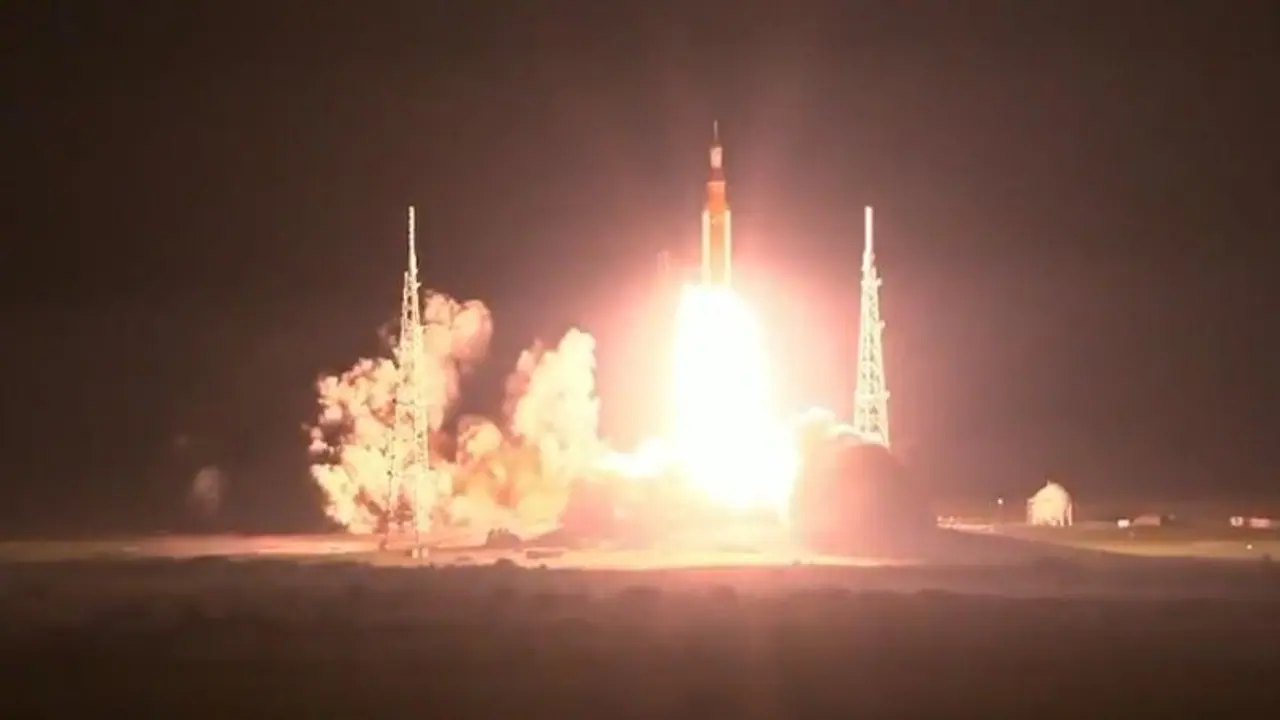NASA's new moon rocket blasted off on its debut flight with three test dummies aboard early Wednesday, bringing the U.S. a big step closer to putting astronauts back on the lunar surface for the first time since the end of the Apollo program 50 years ago.
NASA's new moon rocket launched on its first mission with three test dummies aboard, moving the US one step closer to returning people to the moon for the first time since the Apollo program's conclusion 50 years ago. The rocket will launch an empty crew capsule into a wide orbit around the moon if all goes according to plan during the three-week, make-or-break shakedown trip. The capsule will subsequently return to Earth with a splashdown in the Pacific in December.

The Space Launch System rocket roared aloft after years of delays and billions in cost overruns, soaring from Kennedy Space Center on 8.8 million pounds (4 million kg) of thrust and reaching 100 mph (160 kph) in a matter of seconds. Not about two hours into the trip, the Orion capsule was positioned on top, preparing to break out of Earth orbit for the moon.
Also Read | NASA sets November 16 as the date for Artemis-1's launch to Moon
The rocket's frustrating fuel leaks kept it hopping between its hangar and the launch pad for over three months before the moonshot. The rocket held its footing outside while Hurricane Nicole passed through last week with gusts of more than 80 mph after Hurricane Ian forced it back inside at the end of September.
NASA expected 15,000 to jam the launch site, with thousands more lining the beaches and roads outside the gates, to witness NASA’s long-awaited sequel to Project Apollo, when 12 astronauts walked on the moon from 1969 and 1972. Additionally, crowds congregated in front of NASA facilities in Huntsville, Alabama, and Houston to view the show on huge screens.
Also Read | Out-of-control Chinese rocket debris crashes in the Pacific Ocean
The NASA Artemis lunar exploration mission, named after Apollo's mythical twin sister, officially began with the liftoff. The next mission, scheduled for 2024, will carry four men around the moon, with the possibility of a 2025 landing.
Countdown testing and summer launch attempts were hampered by a number of hydrogen fuel leaks. During Tuesday night's fuelling, a new leak appeared at a different site, but an emergency crew was able to tighten the damaged valve on the pad. The test flight, which will cost $4.1 billion, will last 25 days, or about as long as the personnel will be on board. Before astronauts board, the space agency plans to drive the spaceship to its absolute limits to find any issues. The mannequins, or moonequins as NASA refers to them, are equipped with sensors to gauge cosmic radiation, acceleration, and vibration.
Also Read | China to send monkeys into space to study zero-gravity reproduction: Report
